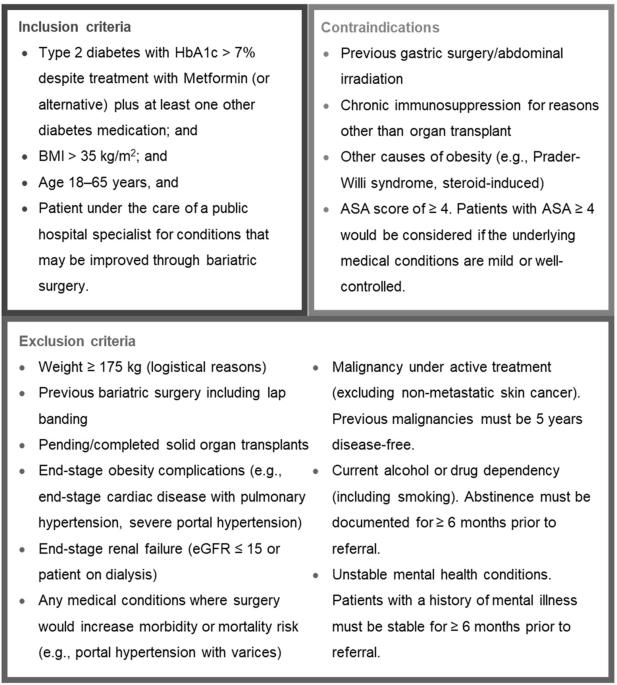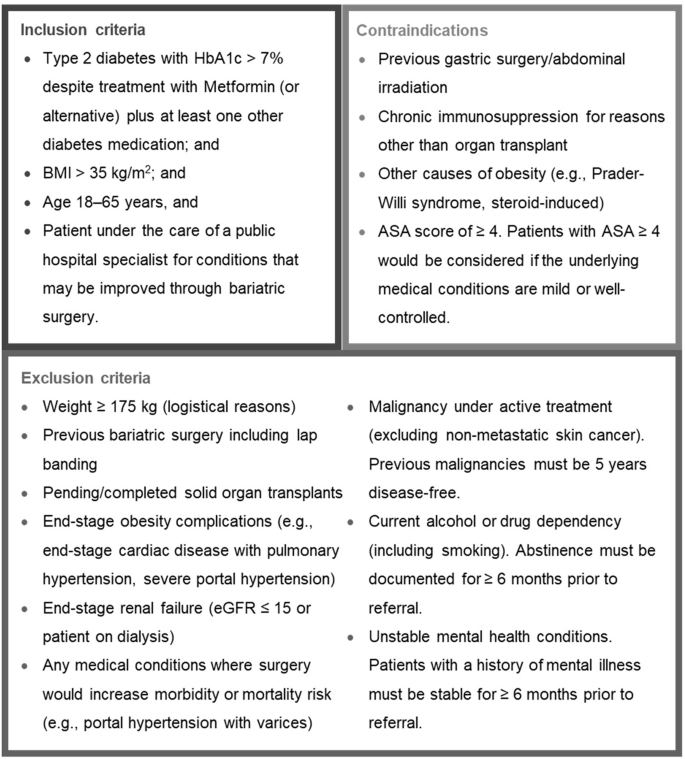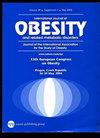Prioritising patients for publicly funded bariatric surgery in Queensland, Australia
IF 4.2
2区 医学
Q1 ENDOCRINOLOGY & METABOLISM
引用次数: 0
Abstract
This study reports the development and pilot application of the Bariatric Surgery Assessment and Prioritisation Tool (BAPT) for use in a public health system. The BAPT was designed as a patient prioritisation instrument to assess patients with excessive weight and type 2 diabetes suitable for bariatric surgery. We assessed whether the instrument successfully identified those who gained the greatest benefits including weight loss, diabetes remission, reduction in comorbidities, and health-related quality of life (HR-QoL). The BAPT instrument was applied to score 292 patients referred for bariatric surgery in Queensland between 2017 and 2020 based on their, body mass index, diabetes status, surgical risk (e.g. pulmonary embolism) and comorbidities (e.g. non-alcoholic steatohepatitis). These data were collected at referral and at 12-months post-surgery for 130 patients and stratified by BAPT scores. Outcomes included clinical and HR-QoL. Patients’ BAPT scores ranged from 12 to 78 (possible range 2–98). Those with higher scores tended to be younger (p < 0.001), have higher BMI (p < 0.001) or require insulin to manage diabetes (p < 0.01). All patients lost similar percentages of body weight (20–25%, p = 0.73) but higher-scoring patients were more likely to discontinue oral diabetes medications (p < 0.001) and the improvement in glycated haemoglobin was four times greater in patients scoring 70–79 points compared to those scoring 20–29 (p < 0.05). Those who scored ≥ 50 on the BAPT were substantially more likely to obtain diabetes remission (57% vs 31%). BAPT scores of 40 and above tended to have greater improvement in HR-QoL. The BAPT prioritised younger patients with higher BMIs who realised greater improvements in their diabetes after bariatric surgery. Higher-scoring BAPT patients should be prioritised for bariatric surgery as they have a greater likelihood of attaining diabetes remission.


澳大利亚昆士兰州优先考虑接受政府资助的减肥手术的患者。
研究目的本研究报告了减肥手术评估和优先排序工具(BAPT)的开发和在公共卫生系统中的试点应用情况。BAPT 被设计为一种患者优先排序工具,用于评估体重超标和 2 型糖尿病患者是否适合进行减肥手术。我们评估了该工具是否能成功识别体重减轻、糖尿病缓解、并发症减少和健康相关生活质量(HR-QoL)等方面获益最大的患者:在 2017 年至 2020 年期间,对昆士兰转诊的 292 名减肥手术患者应用 BAPT 工具进行评分,评分依据包括患者的体重指数、糖尿病状况、手术风险(如肺栓塞)和合并症(如非酒精性脂肪性肝炎)。这些数据是在 130 名患者转诊时和术后 12 个月时收集的,并按 BAPT 评分进行了分层。结果包括临床和 HR-QoL:患者的 BAPT 评分从 12 分到 78 分不等(可能范围为 2-98)。得分较高的患者往往更年轻(p 结论:BAPT 优先考虑年轻患者:BAPT优先考虑体重指数(BMI)较高的年轻患者,他们在减肥手术后的糖尿病得到了更大的改善。BAPT评分较高的患者应优先考虑接受减肥手术,因为他们更有可能获得糖尿病缓解。
本文章由计算机程序翻译,如有差异,请以英文原文为准。
求助全文
约1分钟内获得全文
求助全文
来源期刊

International Journal of Obesity
医学-内分泌学与代谢
CiteScore
10.00
自引率
2.00%
发文量
221
审稿时长
3 months
期刊介绍:
The International Journal of Obesity is a multi-disciplinary forum for research describing basic, clinical and applied studies in biochemistry, physiology, genetics and nutrition, molecular, metabolic, psychological and epidemiological aspects of obesity and related disorders.
We publish a range of content types including original research articles, technical reports, reviews, correspondence and brief communications that elaborate on significant advances in the field and cover topical issues.
 求助内容:
求助内容: 应助结果提醒方式:
应助结果提醒方式:


